In an unprecedented shift in global energy dynamics, developing Asian nations are spearheading the worldwide transition to solar power – renewable energy. While industrialized countries grapple with legacy infrastructure and political inertia, nations across Southeast and South Asia are leveraging their geographical advantages and implementing innovative policies to embrace solar power at a staggering pace. This transformative movement positions these emerging economies not merely as participants in the green revolution, but as its primary architects, challenging conventional narratives about technology adoption and environmental leadership.
The region’s rapid solar expansion is driven by a powerful combination of economic pragmatism, technological innovation, and strategic policy-making, creating a blueprint for sustainable development that balances growth with environmental responsibility. With projects ranging from vast utility-scale solar farms to innovative off-grid solutions, Asia’s developing nations are demonstrating the transformative potential of solar energy to power economies, create jobs, and build climate resilience while reducing dependence on fossil fuels .
Table of Contents
The Continental Shift: Why Asia is Embracing Solar Power
Multiple converging factors explain Asia’s rapid pivot toward solar energy, creating a perfect storm of opportunity for renewable adoption. The region faces surging energy demand driven by rapidly expanding economies, growing populations, and accelerating urbanization. With energy consumption in Southeast Asia alone having increased by 50% since 2005 and projected to continue its strong growth, governments are seeking solutions that can scale quickly without exacerbating already critical environmental challenges .
Economic considerations have become increasingly decisive in this equation. The levelized cost of solar energy has plummeted in recent years, making it not just an environmentally preferable option, but often the most economically viable one. Technological advancements and manufacturing scale, particularly from Asian supply chains, have transformed solar into a cost-competitive power source that can be deployed rapidly to meet urgent energy needs without the lengthy lead times associated with conventional power plants .
The geographical advantage enjoyed by many Asian developing nations cannot be overstated. Countries located in tropical and subtropical regions benefit from intense, consistent solar irradiation throughout the year, with many receiving twice the solar energy potential of temperate regions. This natural endowment makes solar generation particularly efficient and predictable, providing a reliable foundation for energy planning . Furthermore, the distributed nature of solar power offers a strategic solution for countries with archipelagic geographies like Indonesia and the Philippines, where extending traditional grid infrastructure to remote islands presents monumental technical and economic challenges .
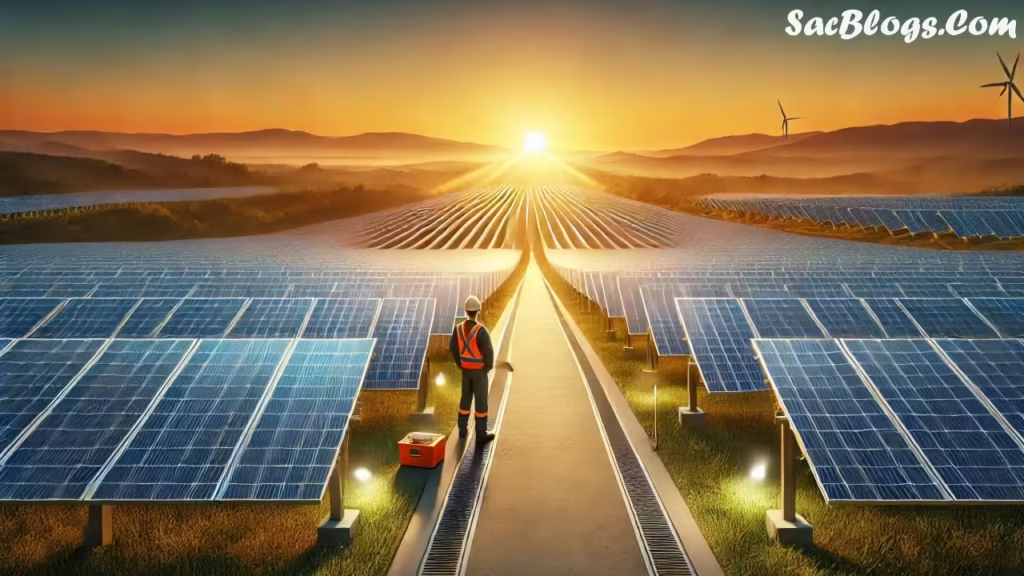
Frontrunners of the Revolution: Country-Specific Solar Breakthroughs
Vietnam’s Solar Surge
Vietman has emerged as the undisputed solar leader in Southeast Asia through a combination of aggressive government targets and effective incentive structures. The country’s remarkable solar capacity exceeded 18 GW by 2023, with exponential growth projected in the coming years . This success story stems from strategic policy decisions, particularly the implementation of favorable feed-in tariffs that guaranteed renewable energy producers long-term contracts at attractive prices. Beyond utility-scale projects, Vietnam has also championed distributed generation through an ambitious rooftop solar program targeting half of all office buildings and homes with solar installations . The country has additionally positioned itself as a manufacturing hub, becoming the world’s second-leading solar panel producer after China, thereby capturing multiple segments of the solar value chain .
India’s Solar Ambitions
India has established itself as a global solar powerhouse, ranking as the world’s fourth largest consumer and producer of solar energy . With the advantage of approximately 300 clear sunny days annually across much of its territory, the country has leveraged its natural assets to achieve an installed solar capacity of 63.2 GW in 2022, far surpassing its initial targets . The government’s ambitious commitments include achieving 500 GW of renewable capacity by 2030, with solar expected to account for the majority at 280 GW . Key to this expansion has been the development of massive solar parks, such as Bhadla in Rajasthan and Pavagada in Karnataka, alongside innovative programs like PM-KUSUM that empower farmers to adopt solar power for agricultural use .
Indonesia and Thailand’s Emerging Leadership
Indonesia is leveraging its unique geographical challenges as opportunities for solar innovation. With its archipelagic structure comprising thousands of islands, the country is pioneering floating solar solutions to overcome land constraints, with ambitious targets of 26.65 GW of floating solar by 2030 . Meanwhile, Thailand has established itself as both a solar adopter and manufacturer, with targets of 15.6 GW of solar capacity by 2035 and a growing presence in the global solar panel manufacturing landscape . The Philippines is also making significant strides, focusing on expanding both solar and wind capacity while developing the world’s largest solar and battery storage power plant .
| Country | Key Solar Achievements | Future Targets | Specialized Focus |
|---|---|---|---|
| Vietnam | Exceeded 18 GW solar capacity in 2023 | 60 GW by 2045 | Manufacturing & offshore wind |
| India | 63.2 GW installed capacity (2022) | 280 GW by 2030 | Utility-scale solar parks |
| Indonesia | Geothermal leader expanding into solar | 26.65 GW floating solar by 2030 | Floating solar innovations |
| Thailand | Strong solar manufacturing presence | 15.6 GW by 2035 | EV & battery ecosystem |

Technological Triumphs: Innovation Driving Accessibility
The solar revolution across developing Asia is being accelerated by a wave of technological innovations specifically suited to the region’s unique challenges and opportunities. Floating solar farms represent one of the most promising developments, particularly for land-constrained nations with abundant water resources. Countries like Indonesia, Thailand, and the Philippines are increasingly turning to floating PV installations that utilize reservoirs, lakes, and other water bodies without competing for valuable agricultural or urban land . This approach not only addresses land scarcity but can also reduce water evaporation and improve panel efficiency through natural cooling effects. The technology is gaining significant traction, with projections indicating that floating PV will account for 10% of Southeast Asia’s total solar capacity by 2030 .
Energy storage solutions represent another critical technological frontier for Asia’s solar expansion. The intermittent nature of solar power necessitates robust storage systems to ensure grid stability and reliable power supply after sunset. Countries across the region are investing heavily in battery technology, with China dominating global battery manufacturing capacity and countries like Thailand hosting Southeast Asia’s first lithium-ion battery gigafactory . Malaysia has announced plans to build the region’s largest battery energy storage system project, while Vietnam is capitalizing on its position as holder of the world’s second-largest rare earth resources to strengthen its role in the critical minerals supply chain .
The innovation extends to building-integrated photovoltaics (BIPV), where solar modules are seamlessly incorporated into construction materials such as windows, facades, and roofs. This approach is gaining traction in urban developments across Asia, particularly in Japan and South Korea, where it supports green building certifications while generating power . Similarly, solar-powered water pumps and filtration systems are addressing critical development challenges, providing clean water for drinking and irrigation in remote rural villages without access to traditional grid infrastructure . These diverse technological applications demonstrate how solar solutions are being tailored to meet Asia’s specific developmental needs while supporting climate goals.

Economic Transformation: Investments, Jobs, and Energy Independence
The solar boom across developing Asia is catalyzing profound economic transformation, creating new industries and job opportunities while enhancing energy security. International financial institutions such as the World Bank and Asian Development Bank have played a pivotal role in catalyzing this transition, providing crucial funding and technical assistance that has helped de-risk projects and attract substantial private sector investment . This influx of capital has accelerated the development of local solar manufacturing capabilities, project development expertise, and installation services, creating virtuous cycles of economic development and job creation across the renewable energy value chain.
The economic case for solar in developing Asia extends beyond direct energy benefits to encompass broader developmental impacts. For rural communities previously without reliable electricity access, solar power is transforming daily life and economic possibilities. It enables the operation of businesses, emergency services, healthcare providers, and schools that simply cannot function without power . Solar-powered irrigation systems are boosting agricultural productivity, while access to electricity allows for extended study hours for children and reduces reliance on harmful alternatives like kerosene lamps. These cascading benefits demonstrate how energy access serves as a foundational element for broader socioeconomic development.
Another powerful driver has been the corporate demand for renewable energy. Multinational companies with operations across Asia are increasingly committing to 100% renewable energy targets for their operations, creating a compelling market pull for solar development . This corporate procurement provides stable demand that helps justify further investment in solar infrastructure, creating a positive feedback loop that accelerates the energy transition. Additionally, by reducing dependence on imported fossil fuels, solar power is helping Asian nations improve their trade balances and shield their economies from volatile global energy markets, thereby enhancing macroeconomic stability and energy sovereignty.
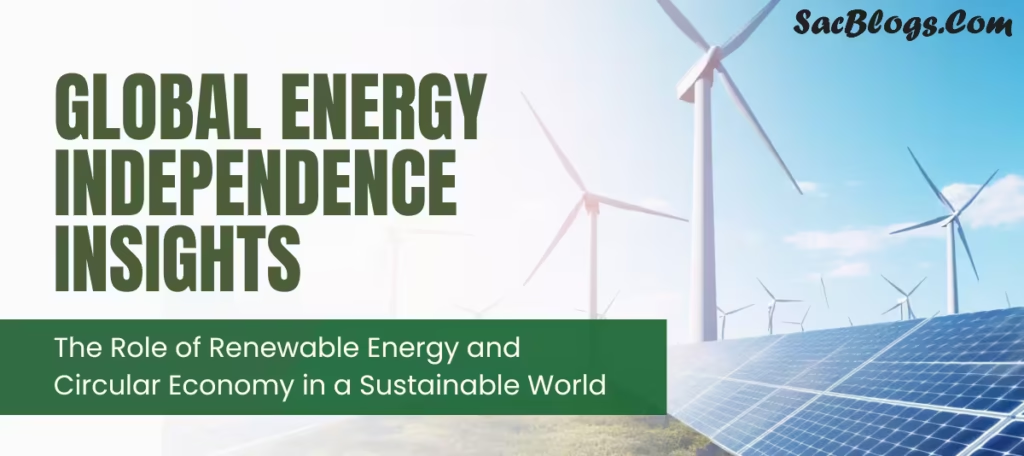
Overcoming Challenges: Grid Modernization and Policy Evolution
Despite the remarkable progress, Asia’s solar revolution faces significant infrastructure challenges that require strategic solutions. The existing electrical grids in many developing Asian nations were designed for centralized fossil fuel power plants, not the distributed and variable nature of solar energy. This mismatch creates grid integration difficulties that can limit the amount of solar power that can be effectively absorbed . To address this, countries are investing in grid modernization efforts, including smart grid technologies that can better manage variable renewable generation and demand fluctuations. These upgrades are essential for maintaining grid stability while maximizing the contribution of solar resources to the energy mix.
Regulatory and financial barriers also present significant hurdles to solar expansion in some markets. Delays in approval processes, unclear regulations, and bureaucratic complexity have slowed the implementation of some renewable energy projects . The substantial upfront costs of solar infrastructure, particularly for energy storage systems, remains a challenge despite declining module prices. These financial barriers are particularly acute for small and medium-sized enterprises that may lack access to affordable capital for solar investments . To address these constraints, governments and development partners are implementing innovative financing mechanisms, including green bonds, concessional loans, and risk-sharing facilities that can lower the cost of capital for solar projects.
| Challenge Category | Specific Barriers | Emerging Solutions |
|---|---|---|
| Grid Infrastructure | Integration of variable renewable sources | Smart grid technologies, advanced energy storage |
| Financial Barriers | High upfront costs, limited access to capital | Green bonds, concessional financing, public-private partnerships |
| Regulatory Hurdles | Delayed approvals, unclear policies | Streamlined permitting, transparent auction processes |
| Supply Chain | Trade barriers, import dependencies | Domestic manufacturing support, diversified supply chains |
The complex international trade landscape presents another layer of challenge for Asia’s solar expansion. Recent shifts in trade policies, including new tariffs on solar equipment imports, have created uncertainty for projects reliant on imported components . These developments highlight the importance of developing resilient supply chains that can withstand geopolitical disruptions. In response, several Asian countries are bolstering their domestic manufacturing capabilities across the solar value chain, from polysilicon production to module assembly, to reduce dependence on imports and capture more economic value from the solar boom .

The Road Ahead: Future Prospects and Regional Cooperation
The future of solar energy in developing Asia appears remarkably bright, with projections indicating continued exponential growth over the coming decades. The renewable energy share across Southeast Asia is set to rise to 20% by 2025 and reach an impressive 66% by 2050, with solar and wind power expected to become the dominant energy sources . This transition will be supported by emerging technologies that further enhance the efficiency and applicability of solar solutions across diverse contexts. Green hydrogen production powered by low-cost solar electricity represents a particularly promising frontier, with countries like Indonesia positioned to emerge as regional leaders in this nascent industry .
Regional cooperation frameworks are playing an increasingly important role in accelerating the solar transition across developing Asia. Initiatives such as the Southeast Asia Plan of Action for Energy Cooperation (APAEC) provide a unified approach to renewable energy adoption and capacity building, setting clear targets including a 23% renewable energy share by 2025 . These collaborative mechanisms enable knowledge sharing, policy alignment, and resource pooling that can address common challenges more effectively than isolated national efforts. Strengthening cross-border energy trading and further harmonizing renewable energy policies will be crucial for optimizing resource allocation and enhancing energy security across the region .
The investment requirements to realize Asia’s solar potential are substantial, but the returns promise to be transformative. BloombergNEF estimates that Asia-Pacific countries would need approximately USD 88.7 trillion in investments to align with the Paris Agreement goals . While this figure appears daunting, it represents capital needed from all stakeholders including companies, financial institutions, governments, and consumers. The falling costs of low-carbon solutions and new policy commitments are helping to close the investment gap, but significant increases in clean energy funding will be necessary—potentially tripling 2023 investment levels between 2024 and 2030 to meet climate objectives .

Conclusion: A Brighter, Cleaner Future Powered by the Sun
The rapid ascent of solar power across developing Asia represents one of the most encouraging developments in the global energy landscape. By embracing their natural advantages and implementing strategic policies, countries from Vietnam to India have transformed from energy followers to renewable energy leaders in a remarkably short timeframe. Their experience demonstrates that economic development and environmental sustainability need not be competing objectives, but can be mutually reinforcing when approached with vision and innovation. The solar revolution in these nations offers powerful lessons for the entire world about leapfrogging legacy technologies and building sustainable energy systems from the ground up.
While significant challenges remain—from grid modernization to financing mechanisms—the trajectory is clear and the momentum is undeniable. Solar power, complemented by other renewable sources and enabled by energy storage and smart grid technologies, is poised to become the cornerstone of Asia’s energy future. This transition promises not only to reduce carbon emissions and combat climate change, but to create more resilient, equitable, and self-reliant energy systems that can power inclusive development for millions. As these developing nations continue to harness their abundant sunshine, they are illuminating a path toward a sustainable future not just for Asia, but for the entire world.
Read Also: Why Renewable Energy is Pakistan’s Gateway to a Sustainable 2026
Frequently Asked Questions About Asia’s Solar Power Revolution
1. Which developing Asian country is currently leading in solar power adoption?
Vietnam has emerged as the clear leader in solar adoption among developing Asian nations, with its solar capacity exceeding 18 GW in 2023 and expected to grow exponentially in coming years. The country has implemented aggressive solar expansion goals, including targets of 60 GW by 2045, driven by favorable feed-in tariffs and a strong manufacturing base .
2. How is solar power helping remote communities in developing Asia?
Solar power is transforming lives in remote communities by providing electricity where traditional grid infrastructure is absent or unreliable. Solar-powered microgrids are improving living standards and economic opportunities, while solar-powered water pumps and filtration systems are providing clean drinking water and irrigation capabilities in rural villages .
3. What makes floating solar technology particularly suitable for parts of Asia?
Floating solar is ideal for land-constrained nations with abundant water resources, such as Indonesia and the Philippines. This innovative approach utilizes reservoirs, lakes, and other water bodies, avoiding competition for valuable agricultural or urban land. Projections indicate floating solar will account for 10% of Southeast Asia’s total solar capacity by 2030 .
4. Are developing Asian countries only installing solar panels, or are they also manufacturing them?
Several developing Asian nations have established robust solar manufacturing industries. Vietnam has become the world’s second-leading solar panel manufacturer after China, while Malaysia and Thailand have also claimed spots among the world’s leading solar PV manufacturers, creating jobs and capturing economic value across the solar supply chain .
5. What role are international partnerships playing in Asia’s solar expansion?
International financial institutions like the World Bank and Asian Development Bank are providing crucial funding and technical assistance that helps de-risk projects and attract private investment. Additionally, regional cooperation frameworks like the Southeast Asia Plan of Action for Energy Cooperation (APAEC) are harmonizing policies and setting unified renewable energy targets .
6. How is Asia addressing the challenge of solar power’s intermittency?
Asian countries are investing heavily in energy storage solutions, with China dominating global battery manufacturing and countries like Thailand hosting Southeast Asia’s first lithium-ion battery gigafactory. These storage systems are essential for stabilizing grids and ensuring reliable power supply when the sun isn’t shining .
7. What are the main obstacles to solar power growth in developing Asian nations?
Key challenges include grid integration difficulties, regulatory hurdles such as delayed approval processes, financial barriers particularly for storage infrastructure, and evolving trade policies that can disrupt supply chains. Countries are addressing these through grid modernization, streamlined regulations, and innovative financing mechanisms .
8. How does solar power contribute to energy independence in developing Asia?
By reducing dependence on imported fossil fuels, solar power is helping Asian nations improve their trade balances and shield their economies from volatile global energy markets. This enhances energy sovereignty and macroeconomic stability while providing predictable long-term energy costs .
9. What innovative solar applications are emerging in developing Asia?
Beyond conventional solar farms, innovative applications include building-integrated photovoltaics (BIPV) that incorporate solar cells into construction materials, floating solar farms on water bodies, solar-powered water purification systems, and portable solar devices for emergency power and outdoor use .
10. What is the projected future of solar power in developing Asia?
The renewable energy share across Southeast Asia is set to rise to 20% by 2025 and reach 66% by 2050, with solar and wind power expected to become dominant energy sources. This growth will be supported by emerging technologies like green hydrogen and continued regional cooperation .
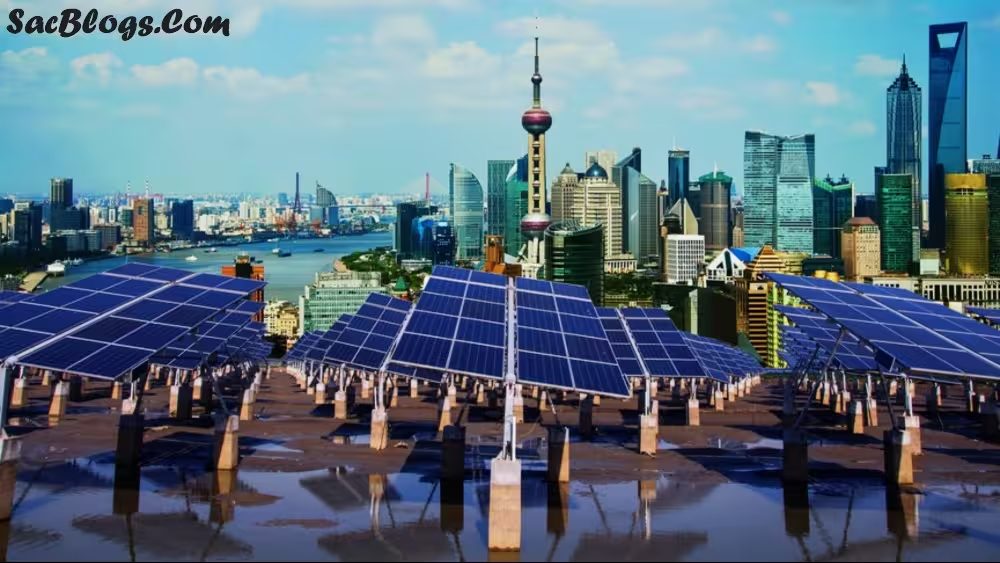


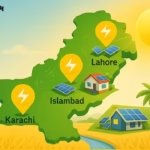

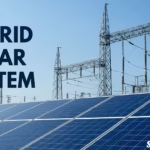
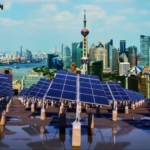
1 thought on “Solar Power in Asia – How Developing Nations Are Leading the Global Green Revolution”